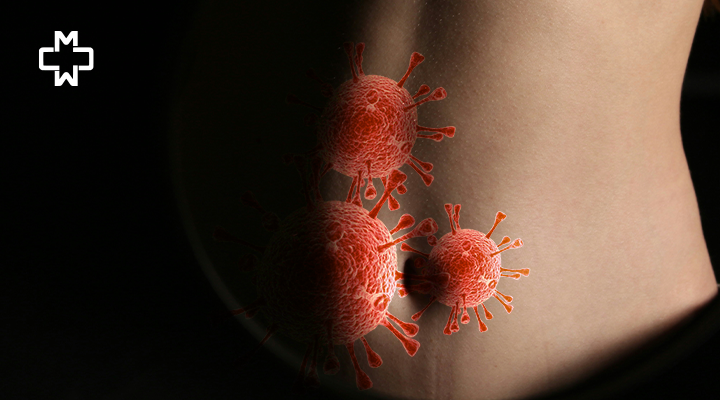Yes, a belly button infection can become serious — especially if ignored. While most are minor and respond well to basic care, untreated infections can occasionally escalate, leading to severe complications like sepsis, which can be life-threatening in rare cases.
What Is a Belly Button Infection?
A belly button infection happens when bacteria, fungi, or yeast overgrow in or around your navel. This small, often neglected area is prone to collecting sweat, dead skin, and moisture — the perfect breeding ground for microbes. Whether you have an “innie” or an “outie”, proper hygiene is essential to avoid an infected belly button.
Dr. Syra Hanif, a board-certified Primary Care physician at Manhattan Medical Arts, notes,
“Most belly button infections are easily treatable, but people often delay care because they mistake early symptoms for irritation or dryness.”
Types of Belly Button Infections
-
Yeast Infection in Belly Button (Candidiasis)
A belly button yeast infection is caused by an overgrowth of Candida — a fungus that loves warm, moist areas. This is especially common in people with diabetes, obesity, or weakened immune systems. You might see redness, itching, a white discharge, or scaling — all signs of yeast infection belly button. -
Bacterial Infections
This type includes staph infection in belly button, often from Staphylococcus aureus. These infections may cause redness, pus, and pain. They can spread fast if left untreated. -
Fungal Infection Belly Button
Beyond yeast, other fungal organisms can infect the navel — resulting in persistent rash and discomfort. If you’re noticing a rash in belly button that doesn’t respond to home care, it could be fungal. -
Piercing-Related Infections
Improper piercing care or exposure to bacteria can cause infections, often showing up as swelling, oozing, and crust around the jewelry site. -
Cyst-Associated Infections
Skin cysts around the navel — like epidermoid or pilar cysts — can become infected, requiring medical drainage and antibiotics.
Belly Button Infection Symptoms
Spotting an infection early is the key. Some of the most common belly button infection symptoms include:
- Redness or swelling
- Discomfort or itching
- Foul-smelling discharge (white, yellow, green)
- Skin peeling or scaling
- Pain or tenderness around the navel
- A visible lump or lesion
- Fever (a red flag for more serious infection)
Visual examples of belly button yeast infection photos often show a red, moist rash with a cottage-cheese-like discharge. But remember — don’t rely solely on pictures. A proper diagnosis is key.
Can a Belly Button Infection Kill You?
In most cases, no — but it can be dangerous if neglected. Severe cases may result in the infection spreading into the bloodstream, leading to sepsis — a potentially fatal response to infection.
Dr. Syra Hanif explains,
“If symptoms like fever, chills, or red streaks from the belly button appear, it may indicate systemic spread. Seek care immediately.”
Although rare, these extreme cases are why you shouldn’t ignore even minor-looking symptoms.
Will a Belly Button Infection Go Away on Its Own?
It depends. An early stage belly button infection might resolve with basic hygiene and care — especially if it’s mild and fungal. But moderate to severe infections usually require belly button infection treatment, including:
- Topical antifungals (for yeast infections)
- Topical or oral antibiotics (for bacterial infections)
- Antiseptic cleaning
- Medical drainage (in case of cysts or abscess)
Ignoring symptoms can worsen the condition, making it harder to treat. So no — not all infections go away on their own.
Belly Button Infection Treatment: At Home and Medical Options
Here’s what you can do for mild infections:
At-Home Care
- Clean with warm water + fragrance-free soap
- Pat dry thoroughly (avoid leaving moisture trapped)
- Apply OTC antifungal or antibacterial creams
- Avoid tight clothing and friction
- Use warm salt water soaks for soothing
Medical Treatment
- Prescription creams like clotrimazole or mupirocin
- Oral antibiotics or antifungals for deeper infections
- Debridement or drainage in cyst-related infections
- Follow-up with a Primary Care provider like Dr. Syra Hanif
Need expert help in NYC? Book an appointment with Manhattan Medical Arts.
Why Is My Belly Button Red?
Redness in the navel is one of the earliest signs of irritation or infection. It could be due to:
- Yeast overgrowth
- Friction or sweat accumulation
- Allergic reaction to jewelry
- Early infection (bacterial or fungal)
- A sign of belly button rash or dermatitis
Read more: How to Clean Your Belly Button and Prevent Infection
FAQs
Should I go to the ER for a belly button infection?
Only if you have fever, red streaks, extreme pain, or signs of spreading infection. Otherwise, urgent care or primary care is sufficient.
Can a belly button infection heal itself?
Mild cases might, but it’s risky to assume. Without proper care, the infection can worsen.
What does a severe belly button infection look like?
Redness, pus, swelling, and systemic symptoms like fever or chills. A strong odor may also indicate severity.
What are belly button warning signs?
Pain, warmth, discoloration, discharge, or a visible bump. If symptoms persist beyond a few days, seek care.
How do you know if your belly button pain is serious?
If it’s sharp, spreading, or associated with fever or discharge, consult a doctor.
Can an STD cause a belly button infection?
Rarely. However, if an STD causes a skin lesion near the area, it might complicate hygiene or infection risk.
What does your belly button say about your health?
Persistent odor, discharge, or color changes can reflect poor hygiene, infection, or even systemic conditions.
How can I treat a belly button infection at home?
Clean with salt water, keep it dry, and use OTC antifungal or antibiotic creams. Monitor symptoms closely.
How long does a belly button take to fully heal?
Mild cases may resolve in 5–7 days. Moderate or severe infections can take 2–4 weeks with proper care.
Is belly button discharge an emergency?
If it’s bloody, green/yellow, or foul-smelling — and accompanied by fever — get medical help.
When should I go to the doctor for an infected belly button?
You should see a doctor if your belly button infection doesn't improve with basic care, gets worse, or starts showing warning signs like redness spreading outward, pus discharge, fever, or intense pain. If you have diabetes, a weakened immune system, or recently got a piercing, it’s best not to wait. Early medical treatment can prevent serious complications, including systemic infections like sepsis.
How do I know if my belly button infection is bacterial or fungal?
Bacterial infections usually cause redness, swelling, pain, and thick yellow or green discharge with a foul smell. Fungal infections (like a yeast infection) often result in red, itchy rashes with white, cheesy discharge and may have a musty odor. A healthcare provider can confirm the type with a simple swab test.
Why does my belly button smell when I put my finger on it?
A smelly belly button is usually due to the buildup of sweat, dirt, dead skin cells, or infection. Bacteria and yeast thrive in warm, moist environments — especially if hygiene is poor — leading to unpleasant odors when disturbed.
Can I clean my infected belly button with salt water?
Yes, cleaning your infected belly button with a warm saltwater solution can help reduce bacteria and promote healing. Mix 1 teaspoon of salt in a cup of warm water and apply gently using a clean cotton ball or swab. Avoid scrubbing, and pat the area dry afterward.
How to stop belly button discharge?
To stop discharge, keep the area clean and dry, avoid irritating products, and apply topical treatments (antifungal or antibiotic) as directed by your doctor. If the discharge continues, worsens, or is accompanied by other symptoms like fever, seek medical attention.
Is belly button discharge normal?
No, discharge from the belly button isn’t considered normal. It’s often a sign of infection (bacterial or fungal), a cyst, or poor hygiene. If you notice persistent or smelly discharge, it’s best to get evaluated by a healthcare provider.
Sources
- Cleveland Clinic – Belly Button Yeast Infection
- UPMC HealthBeat – How to Clean Your Belly Button and Prevent Infection
- American Academy of Pediatrics – Omphalitis: Umbilical Cord Infection
- National Library of Medicine – Omphalitis Clinical Presentation
- Pediatrics Emergency Care Journal – Her belly button is leaking: a case of patent urachus
- Frontiers in Pediatrics – Chinese medicine belly button application meta-analysis
Disclaimer
This blog is for informational & educational purposes only, and does not intend to substitute any professional medical advice or consultation. For any health related concerns, please consult with your physician, or call 911.
-
About The Author
Dr. Syra Hanif M.D.Board Certified Primary Care Physician
Dr. Syra Hanif is a board-certified Primary Care Physician (PCP) dedicated to providing compassionate, patient-centered healthcare.
Read More







